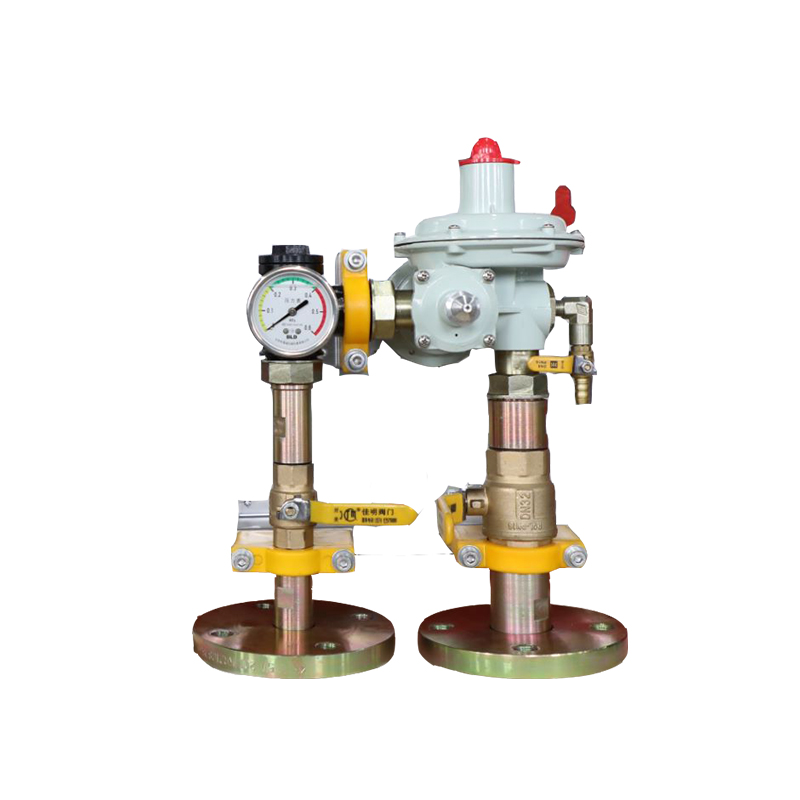
Dec . 21, 2024 12:52
Back to list
Gas Pressure Regulation System for Optimal Flow Control and Safety Efficiency
Understanding Gas Pressure Regulators
Gas pressure regulators are essential devices used in various applications to control the pressure of gases. They serve to ensure that a consistent and safe level of pressure is maintained as gas moves from a source, such as a tank or pipeline, to the end-user, where it may be employed in a range of industries such as automotive, manufacturing, or even residential heating.
What is a Gas Pressure Regulator?
A gas pressure regulator is a mechanical device that reduces the high inlet pressure of gas to a lower, manageable outlet pressure. Typically, gases like natural gas, propane, or oxygen are supplied at high pressures. Without regulation, these gases could cause damage to downstream equipment, create hazardous situations, or result in inefficient operation.
Regulators are designed to maintain the pressure within a specified range, regardless of fluctuations in the incoming pressure or variations in the gas demand downstream. This ensures that equipment operates safely and efficiently, with optimal performance.
How Do Gas Pressure Regulators Work?
The operation of a gas pressure regulator is relatively straightforward. The device consists of a pressure-sensing element, a spring, and a valve mechanism. High-pressure gas enters the regulator through the inlet and passes through the sensing element. The pressure-sensing element detects the pressure of the gas and signals the spring to adjust the valve opening.
As gas flows through the regulator, if the downstream pressure rises above the preset limit, the sensing element allows the spring to close the valve slightly, thus reducing the flow of gas. Conversely, if the pressure drops below the desired level, the spring mechanism allows more gas to flow through the valve. This feedback loop continues, ensuring a stable output pressure is maintained.
.
There are various types of gas pressure regulators, each designed for specific applications.
مخفض ضغط الغاز

1. Single-Stage Regulators These are simple regulators that reduce the inlet pressure to the desired outlet pressure in one stage. They are commonly used in applications where the inlet pressure does not fluctuate significantly.
2. Two-Stage Regulators These regulators provide a more stable outlet pressure by using two stages of pressure reduction. The first stage reduces the high pressure to an intermediate level, and the second stage further reduces this pressure to the required level. This design is beneficial in applications where the inlet pressure can vary widely.
3. High-Pressure Regulators Designed to handle pressures above standard levels, these regulators are essential in specialized industrial applications.
4. Low-Pressure Regulators These are used where low pressure is needed, such as in appliance applications in homes.
Applications of Gas Pressure Regulators
Gas pressure regulators are utilized in several industries. In residential settings, they control the supply of gas for heating, cooking, and hot water systems. In commercial settings, they are used for heating, cooking, and powering machinery. Industrial applications also rely on these regulators to ensure that processes involving gas mixtures occur safely and efficiently.
Moreover, gas pressure regulators play a crucial role in the medical field, particularly in hospitals for supplying therapeutic gases like oxygen and nitrous oxide to patients.
Conclusion
In summary, gas pressure regulators are vital components in the safe and effective use of gaseous fuels and materials across various industries. Their ability to control and stabilize pressure ensures that equipment operates safely, efficiently, and within regulatory compliance. As technology advances, we can expect improvements in the accuracy and reliability of these devices, further enhancing their role in the safe distribution and use of gases. Whether in high-stakes industrial environments or everyday residential applications, gas pressure regulators remain a key factor in managing one of our essential resources—gas.
Next:
Latest news
-
Safety Valve Spring-Loaded Design Overpressure ProtectionNewsJul.25,2025
-
Precision Voltage Regulator AC5 Accuracy Grade PerformanceNewsJul.25,2025
-
Natural Gas Pressure Regulating Skid Industrial Pipeline ApplicationsNewsJul.25,2025
-
Natural Gas Filter Stainless Steel Mesh Element DesignNewsJul.25,2025
-
Gas Pressure Regulator Valve Direct-Acting Spring-Loaded DesignNewsJul.25,2025
-
Decompression Equipment Multi-Stage Heat Exchange System DesignNewsJul.25,2025

